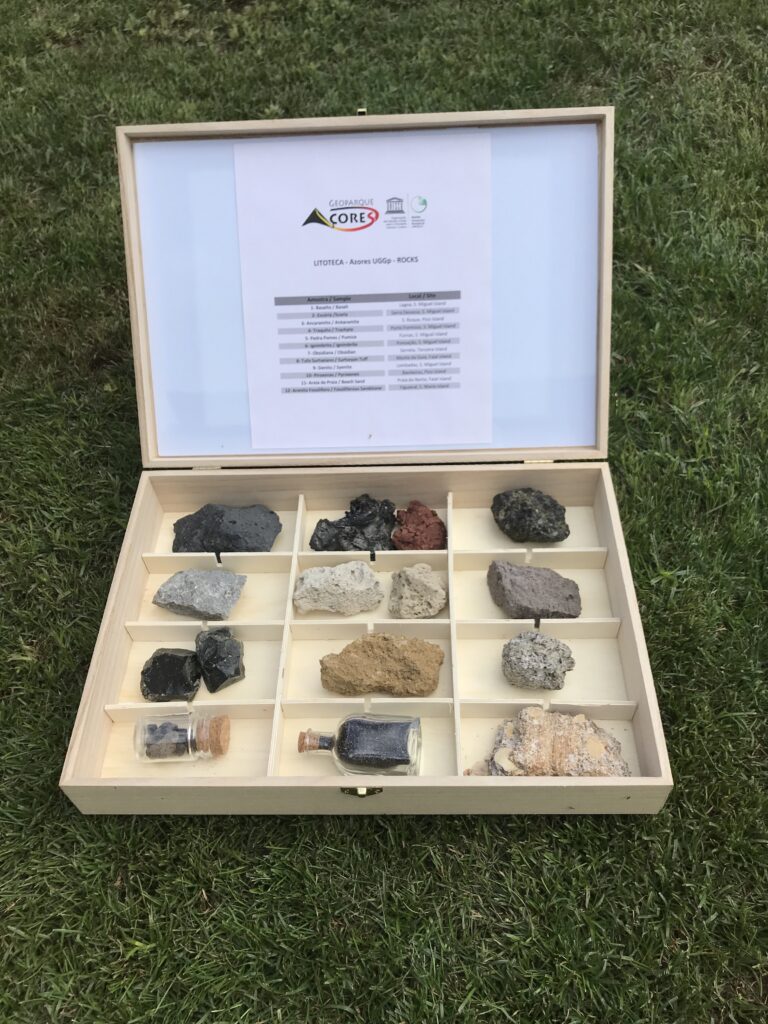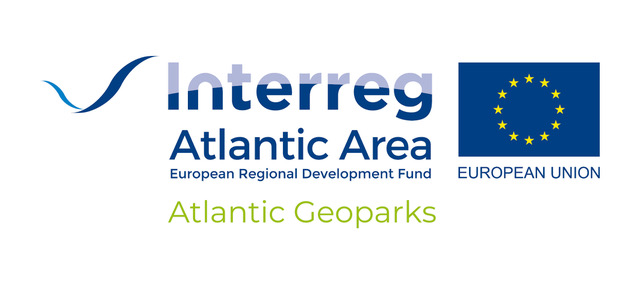“LITOTECA” – A New Project through National Networking among Portuguese Geoparks
a case study provided by the Azores UNESCO Global Geopark, Portugal
Networking is one of the four essentials of UNESCO Global Geoparks, together with highlighting geological heritage of international value, management and visibility; it is focused not only in cooperation with the local people living in the Geopark, but also in cooperating with other Global Geoparks learning from each other and, as a network, increasing the recognition and value of this UNESCO label.
This networking purpose, as well as being applicable internationally, provides opportunities for national groupings of Geoparks to work together. This case study is an initiative among the Portuguese Geoparks: the production, exchange and use of a “LITOTECA” (meaning deposit/archive of rock samples) to support educational, scientific and dissemination/promotion of Geoscience initiatives.
The “LITOTECA” encompasses a collection of representative rock samples of the geodiversity from each Portuguese Geopark territory and its geological history, prepared by each Portuguese Geopark staff and shared with the other territories, on an “one for all” basis. Easy to use, made portable and adequately prepared and identified with a short standardised descriptive label, the geological samples are suitable to be used not only by the Geopark staff, but also by their different stakeholders. The collection is designed to be appropriate to use on several activities either in its subsets or as an entire collection and for different purposes, from educational activities, to general public sessions, and exhibitions.

The Azores Global Geopark “Litoteca” set includes 12 samples that illustrate the lithological geodiversity of the Azores Islands, including ankaramite, surtseyan tuff, ignimbrite, trachyte, basalt, scoria, pumice, volcanic sand, syenite and fossiliferous limestone samples.
The rock collection of Naturtejo Global Geopark shows a good representation of the rock cycle, including 27 sedimentary (diamictites to epigenic limestones), metamorphic (pelitic hornfels to gneisses) and igneous (S-type granites to dolerites) samples.
The Arouca Global Geopark “Litoteca” includes rock samples of conglomerate, carbonaceous shale, quartzite, slate, metaconglomerate, metagraywacke, black quartzite, quartzodiorite, as well as several granite samples, including the iconic Nodular Granite of Castanheira (“Pedra Parideira/Rocks Delivering Stones”).
The Terras de Cavaleiros Global Geopark collection is constituted of 12 samples representative of oceanic and continental lithosphere sequences and include dunite, serpentinite, gabbro, amphibolite, mafic granulite, and gneiss samples, among others.
The Aspiring Geopark Estrela also contributed to this national networking initiative with a rock collection that includes about 30 samples of various granitic rocks, migmatite, dolerite, quartz, schists, shales, slates, hornfels, greywacke, phyllite, as well as glacigenic sediments (till).
